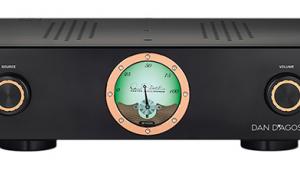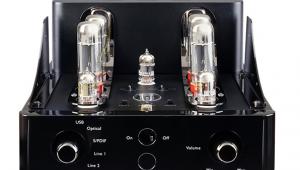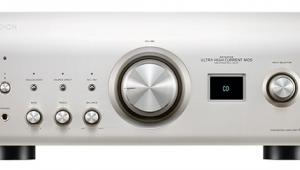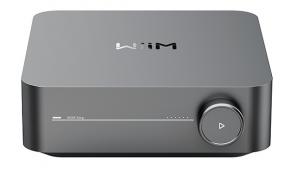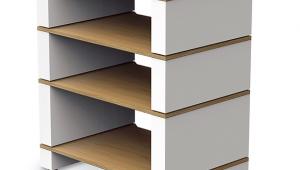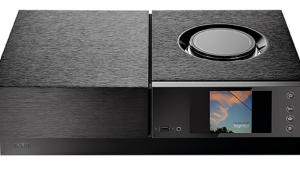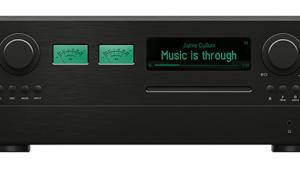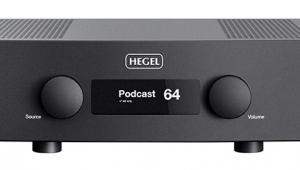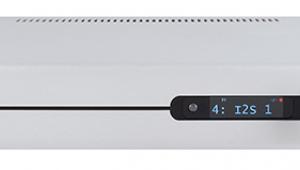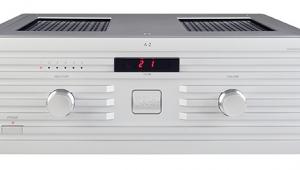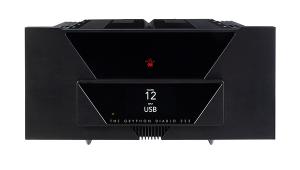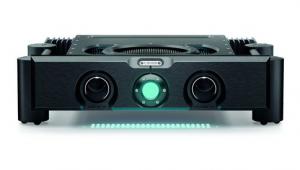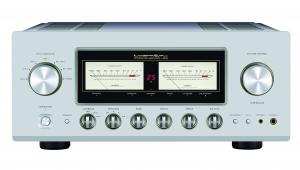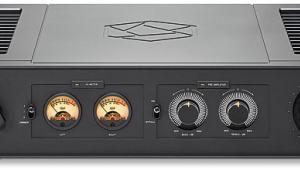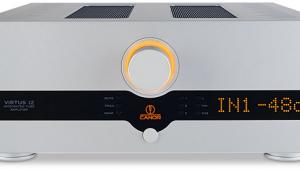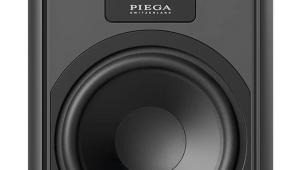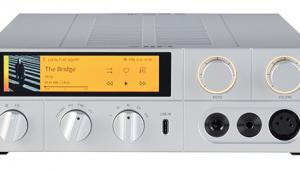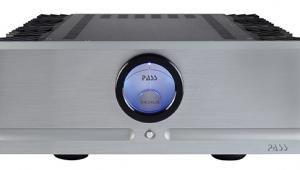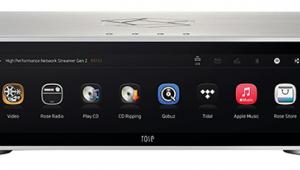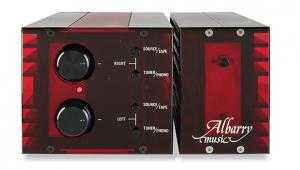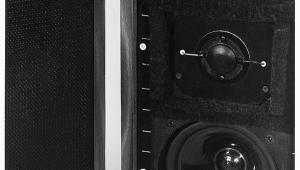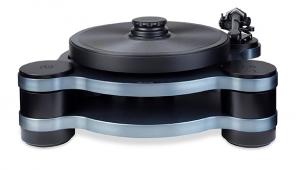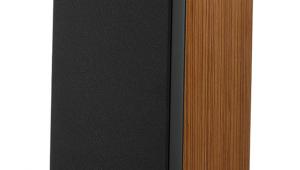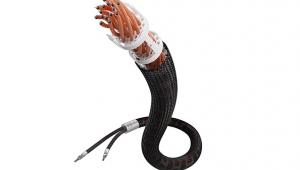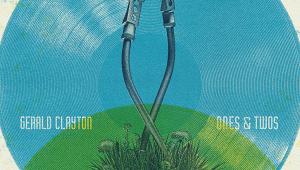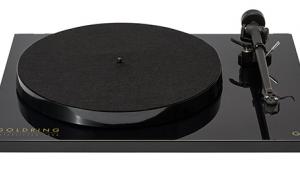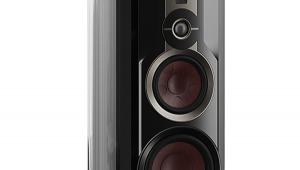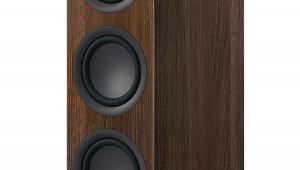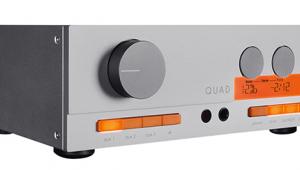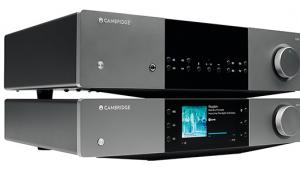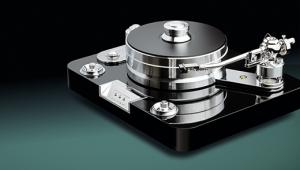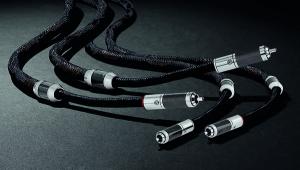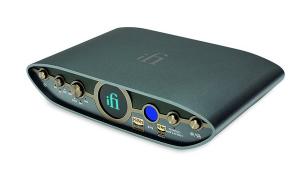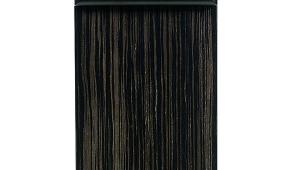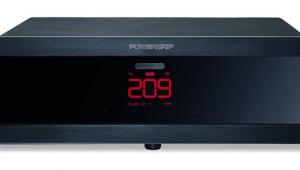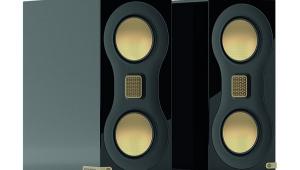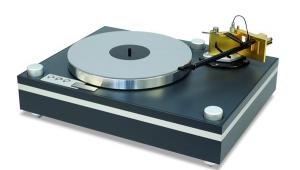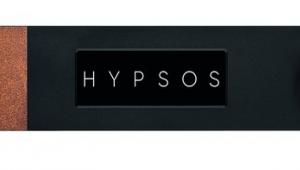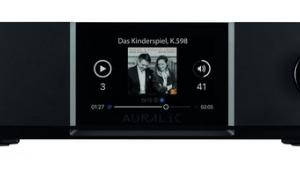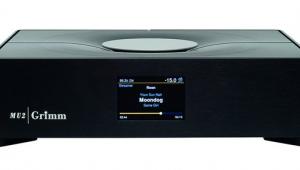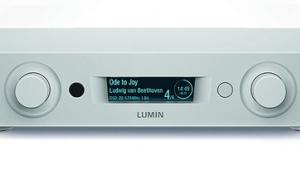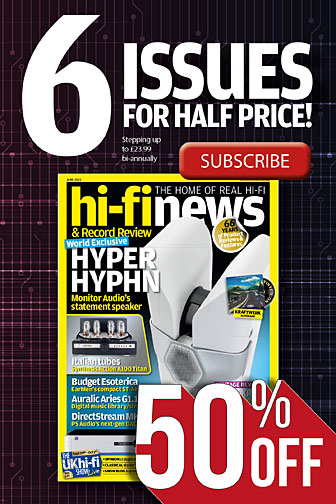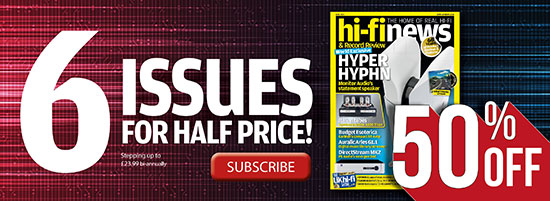Yamaha HA-L7A headphone amp/DAC
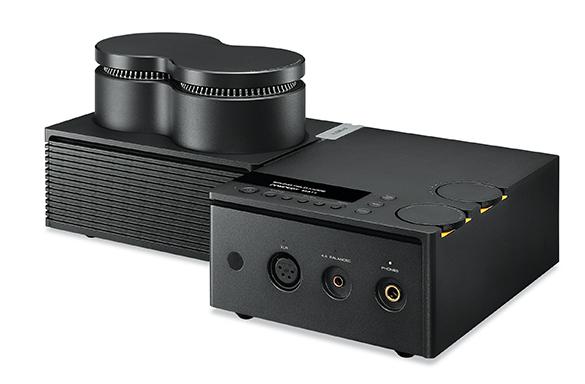

For a brand name that appears on very diverse products, from grand pianos to outboard motors, it’s amazing that Yamaha has little in the way of high-end head-fi – the company was a very early adopter of planar-magnetic headphone technology, after all. The HA-L7A DAC/headphone amp is the second product launched to address that deficiency, following on from the YH-5000SE headphone, which garnered an EISA Award last year and is a spiritual successor to the legendary HP-1 from ’76.
Priced at £3599, the HA-L7A is a DAC/headphone amplifier aimed at keen headphone users, most likely with multiple cans in their collections. Multiple outputs, including balanced 4.4mm Pentaconn and XLR connections, multiple inputs, low noise for compatibility with very sensitive IEMs, and ample power reserves [see boxout] cater to all needs.
Blast from the past
In practice, this desktop-sized unit faces a lot of competition, not least iFi Audio’s Pro iDSD Signature [HFN Jan ’22], while some rivals, like Naim’s Uniti Atom Headphone Edition [HFN Aug ’21], offer streaming. While it eschews that, the HA-L7A does include DSP modes, as found on the brand’s soundbars and AV receivers. Called ‘Sound Field’, this technology is another nod to the past, specifically the DSP-1 from 1986, which was one of the first processors able to up-mix stereo to (six-channel) surround, featuring ‘sound field’ modes based on measurements of actual venues. Useful on a soundbar, yes, but spatial virtualisation on a headphone amplifier?
When I first encountered the HA-L7A behind closed doors at High End Munich in 2023, my initial reaction was: ‘Is this modelled on the blue L-block from Tetris?’, followed by ‘Is this two units – DAC and amp – that just happen to be glued together?’. Head-fi kit tends to be more extravagant than hi-fi gear, but still, the HA-L7A doesn’t look like any other DAC/headphone amp around, its L-shaped chassis sitting on a protruding ‘base’ while offering sockets to power a headphone or three and topped on one side by two cylindrical ‘towers’.
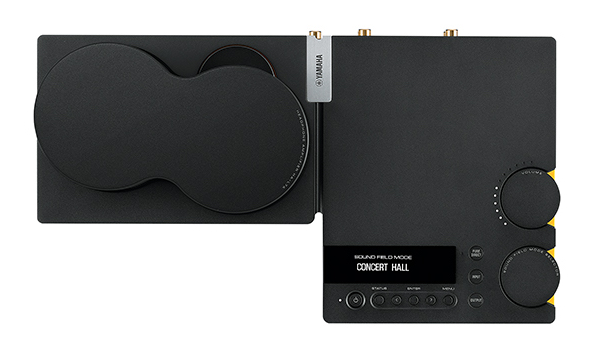
These host the toroidal transformers powering the preamp and ES9038 Pro DAC-based digital stages, and headphone amp. The two-part industrial design also allows this PSU section to be screened away from the HA-L7A’s ‘Floating and Balanced Power Amplifier’ and digital circuits. The PCBs are also physically separated beneath the 8mm-thick chassis top plate.
On top of the DAC/amp is an OLED display. This is not a touchscreen but reflects the operation of five small (menu navigation) buttons below and a trio of flush buttons to the right that let the user quickly switch inputs and outputs, or engage a Pure Direct mode that bypasses all the HA-L7A’s DSP shenanigans.
Breaking convention
Don’t expect too many menu options here, although you can select between seven standard ESS filters and one Yamaha has added itself [see PM's Lab Report], and switch the amplifier between two gain settings. Meanwhile, two larger flush-mounted controls cover off volume and Sound Field mode. These are placed on the edge, allowing you to make an adjustment with a slight caress along the side of the amp. Yellow accents below the dials, and a circular row of LEDs indicating volume level, are nice touches too.
As Yamaha engineers Ryoto Sato and Yusuke Konagai stated during the HA-L7A’s introduction, Sound Field was added to cater to, let’s say, ‘unconventional’ use of a DAC/headphone amp. This plays into the trend of using headphones for audiophile listening to music and for watching TV/film or maybe even gaming. With these other content types, says Yamaha, listeners might desire a more surround-like experience.
Inside and out
There are six Sound Field modes on offer (the brand’s AV receivers often feature more than 20...), each sounding distinct as they blend upmixing, acoustic venue data and a head-related transfer function in different proportions – although it’s not clear how the latter works without personal measurements, as is the case, for example, with Sony’s HRTF technology.
Regardless, Drama and Cinema are for TV and movie fare, and Music Video is self-explanatory. Outdoor Live – which, frankly, is extreme – aims to recreate ‘the open-air feeling of an outdoor setting’, while Concert Hall creates the echoes and space of a live concert. A final option, Background Music (BGM), leans heavily on Yamaha’s HRTF processing.
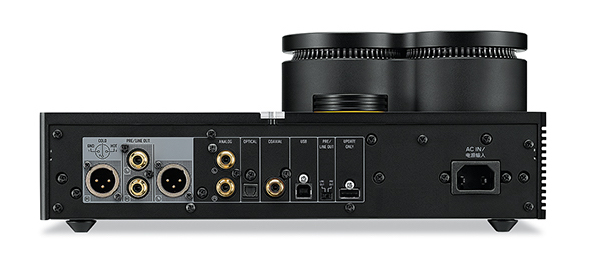
Looking at it from Sato and Konagai’s perspective, the inclusion of this technology is a ‘win-win’ – purist stereo lovers can ignore this part of the HA-L7A by switching the amp to ‘Straight’, while others who use headphones to listen to all forms of audio get extra options.
![]() Put it in neutral
Put it in neutral
Together with the HA-L7A, Yamaha sent along its open-back/planar-magnetic YH-5000SE headphones. As a source I used both a Volumio Rivo [HFN Sep ’23] and a MacBook Air M2 connected by USB, plus a WiiM Pro Plus [HFN Aug ’24] hooked up by optical cable – all desktop friendly units. I was up and running in seconds.
The YH-5000SE, which I’ve used before, is a very light and nimble communicator without being overly bright. Not unexpectedly, it suited the largely neutral sound of the HA-L7A very well, portraying the saxophone in the finale of 'Can I Call You' from The Waeve’s eponymous debut album [TRANS636CD; 48kHz/24-bit] in sumptuous and smooth style, devoid of any sharp edges. And this was the case even when the sax playing became a lot more forceful during the latter part of the follow-up track ‘Kill Me Again’.
At the same time, Yamaha’s DAC/amp did a great job of portraying Rose Elinor Dougall’s vocals on this collaboration with Blur guitarist Graham Coxon. ‘Drowning’ is a particular favourite, stylistically heading in multiple directions during its playtime, but kicking off in fascinating fashion with airy synth tones and Dougall’s voice floating through space. The HA-L7A, together with its stablemate headphone, seemed at ease uncovering the song’s many layers, an indication of how well the amplifier handles complexity.
Austrian Audio’s more analytical The Composer ’phone demonstrated that Yamaha’s digital engineering comes from the top drawer. As a principle, the music was well-resolved but not explicitly etched, the intro of ‘Residue’ on Benjamin Clementine’s And I Have Been [Preserve Artists digital download; 48kHz/24-bit] presented full of spatial detail. Clementine hits and sustains some very high notes, an impressive feat that the HA-L7A and The Composer conveyed with muscular force. Later on, the switch from close-miked vocals to the whole band in ‘Delighted’ was a seamless transition – the HA-L7A doing both ‘intimate’ and ‘spacious’ without recourse to any of the Sound Field options.
Hi, lo silver lining
Again, The Composer can sound dry and over-analytical in the wrong hands, but gripped by Yamaha’s amp there was sufficient power to drive these AKG-inspired cans with a slight touch of warmth. Meze’s 109 Pro headphone is more affordable and easier to drive, so with this I expected the HA-L7A’s ‘Lo’ gain setting to be fine. However, set to ‘Hi’ it sounded far, far better – this tying into PM’s measurements [see boxout]. The percussion and cries in Ludwig Göransson’s Book Of Boba Fett [Walt Disney digital download] reverberated very naturally, while the singing and strings on Arooj Aftab’s masterful Night Reign [Verve Records 602458980288] came across as fine and delicate.
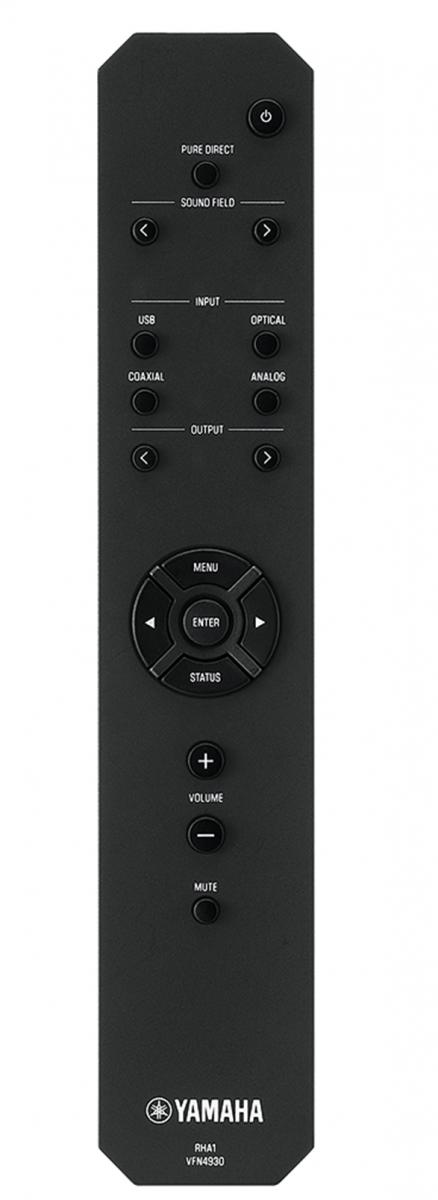
The 109 Pro is a warmer-sounding headphone that fits perfectly with this collection of minimalist songs, all with diverse influences. A touch of softness at the top of the HA-L7A’s range also ensured the album satisfied through Beyerdynamic’s typically bright-sounding DT 1990 PRO, albeit with more clarity and less harshness than possibly experienced with less accomplished headphone amps.
Drama class
As for the Sound Field modes, for listening to music, I wouldn’t engage them. With film content, such as Ridley Scott’s Napoleon streamed via Apple TV+, the Drama setting did make the battle at Austerlitz more engaging, creating a grander soundscape when heard via the already quite spatial The Composer.
This made both the snowstorm leading up to the skirmish more lifelike, while the fated charge and the French cannon were delivered with more oomph. While Yamaha’s Sound Field modes are distinct from the headphone spatial audio algorithms of Apple or Dolby offered on wallet-friendly in-ears, it was gratifying to experience something similar on hi-fi headphones.
Hi-Fi News Verdict
While the DSP-infused ‘Sound Field’ modes are a bit of a mixed bag and probably won’t appeal to everyone, the rest that the HA-L7A has on offer ensures this Yamaha DAC/headphone amp is attractive for head-fi collectors and more casual but demanding listeners alike. The industrial design makes it a talking piece, but it’s the multitude of inputs and outputs, and power on tap, that promises audiophile bliss.
Sound Quality: 88%
